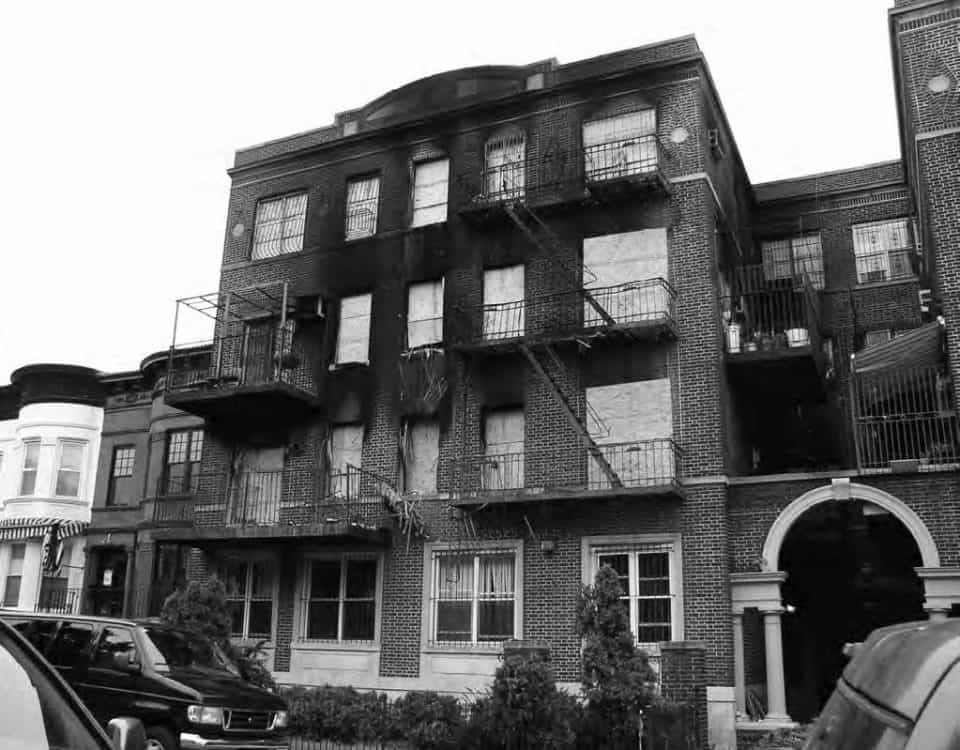In the spring of 2012, FDNY decided to conduct experiments in cooperation with the National Institute of Standards and Technology (NIST) and Underwriters Laboratory (UL) at Governors Island. The planned tests would include 20 “live burns” of non-fireproof structures. Scientists, engineers and Firefighters were assigned to create significant structural and content fires. The engineers would […]
In the winter of 2006, the FDNY experienced two challenging, wind-impacted fires in high-rise fireproof multiple dwellings. On January 26th, a fire at 40-20 Beach Channel Drive in Rockaway, Queens, seriously injured and trapped several members. If not for the heroic actions of members on the fire floor, tragedy would have revisited the FDNY at […]
On October 29, 2012, hundreds of FDNY members responded during a night of fires and floods, leaving their own homes unguarded and putting others before themselves, as New York’s Bravest always do. In the aftermath of Hurricane Sandy, many FDNY members were left devastated or displaced, in need of a helping hand from their FDNY […]
Editor’s Note: A two-part article, this narrative addresses the 1994 fire at 62 Watts Street, focusing on building type, construction, weather and FDNY operations. Introduction On March 28, 1994, a residential fire occurred in a first-floor apartment at 62 Watts Street in the borough of Manhattan. The incident led to the deaths of Captain John […]
Labor Day is the unofficial end of summer. In Crown Heights, Brooklyn, this day is highlighted by the annual West Indian Day Parade. Festivities, such as the J’Ourvet Festival, typically start during the overnight hours prior to the actual parade, with smaller gatherings all around the Crown Heights and East Flatbush communities. FDNY planning for […]
Please refer to print edition.
When roof Firefighters arrive at a fire in a building that has a rooftop fence, they often question: Why was that fence installed in my way? The answer is simple: The building owner probably did not have a choice. The prevalence of protective barriers on the rooftops of existing and proposed buildings is associated with […]
The adage that no two fires are ever the same is a familiar refrain to everyone in the FDNY. Perhaps it has never been more appropriate as on the afternoon of April 14, 2012. This particular incident eventually required multiple alarms, using approximately 200 Firefighters in four buildings, before the fire was placed Under Control. […]
In the spring of 2012, FDNY decided to conduct experiments in cooperation with the National Institute of Standards and Technology (NIST) and Underwriters Laboratory (UL) at Governors Island. The planned tests would include 20 “live burns” of non-fireproof structures. Scientists, engineers and Firefighters were assigned to create significant structural and content fires. The engineers would […]
In the winter of 2006, the FDNY experienced two challenging, wind-impacted fires in high-rise fireproof multiple dwellings. On January 26th, a fire at 40-20 Beach Channel Drive in Rockaway, Queens, seriously injured and trapped several members. If not for the heroic actions of members on the fire floor, tragedy would have revisited the FDNY at […]
On October 29, 2012, hundreds of FDNY members responded during a night of fires and floods, leaving their own homes unguarded and putting others before themselves, as New York’s Bravest always do. In the aftermath of Hurricane Sandy, many FDNY members were left devastated or displaced, in need of a helping hand from their FDNY […]
Editor’s Note: A two-part article, this narrative addresses the 1994 fire at 62 Watts Street, focusing on building type, construction, weather and FDNY operations. Introduction On March 28, 1994, a residential fire occurred in a first-floor apartment at 62 Watts Street in the borough of Manhattan. The incident led to the deaths of Captain John […]
Labor Day is the unofficial end of summer. In Crown Heights, Brooklyn, this day is highlighted by the annual West Indian Day Parade. Festivities, such as the J’Ourvet Festival, typically start during the overnight hours prior to the actual parade, with smaller gatherings all around the Crown Heights and East Flatbush communities. FDNY planning for […]
Please refer to print edition.
When roof Firefighters arrive at a fire in a building that has a rooftop fence, they often question: Why was that fence installed in my way? The answer is simple: The building owner probably did not have a choice. The prevalence of protective barriers on the rooftops of existing and proposed buildings is associated with […]
The adage that no two fires are ever the same is a familiar refrain to everyone in the FDNY. Perhaps it has never been more appropriate as on the afternoon of April 14, 2012. This particular incident eventually required multiple alarms, using approximately 200 Firefighters in four buildings, before the fire was placed Under Control. […]


